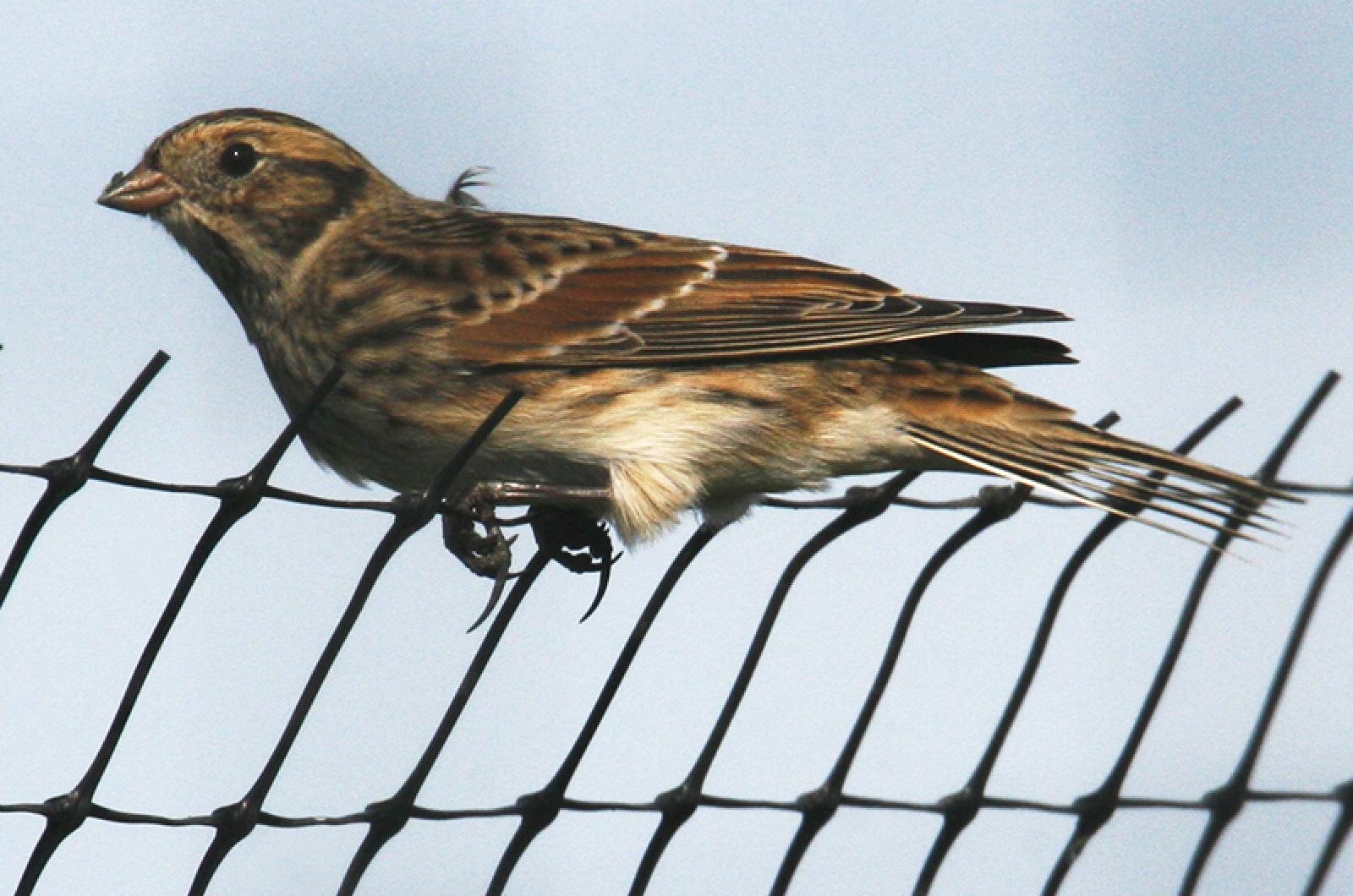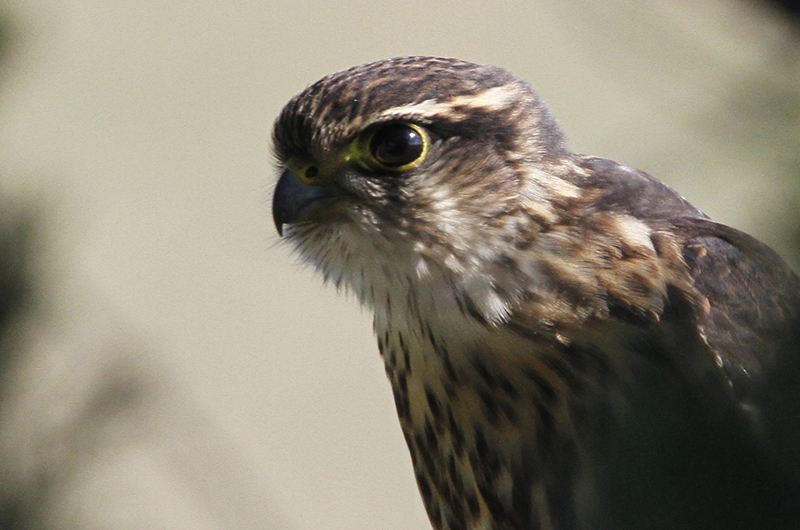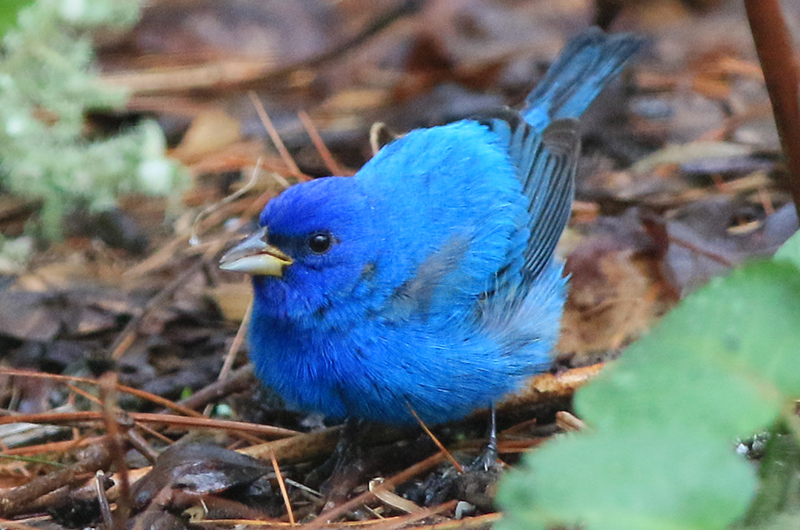A first for the year! Bob Shriber found a Lapland longspur on Norton Point beach on March 1. This species is never common and can easily be mistaken for a sparrow. It is something birders call “a little brown job.” At this time of the year it is usually found on beaches or in agricultural fields, often with snow buntings or horned larks.
Roger Cook heard another first for the season: a woodcock was peenting near his house on Feb. 26. A sure sign of spring.
Spring overshoots are migrating birds that are carried past their intended migratory destination by strong southerly winds originating in the Pacific Ocean, crossing into the Gulf of Mexico before veering northward. These winds may carry interesting birds northward well before their normal arrival dates, including colorful Baltimore orioles, rose-breasted and blue grosbeaks, and indigo buntings. Sandra Talanian reports a possible indigo bunting at her Katama feeder on Feb. 24. We get them almost every year, but it is still early so a photograph is needed to confirm the identification. March and April is when these spring overshoots show up.
Lanny McDowell reports a mainland-style black-capped chickadee in his yard on March 1. Yes, mainland (Woods Hole) chickadees differ from our chickadees. Mainland chickadees have a two-note whistled “feee-beee” song similar to ours, but the second whistled note has a lower pitch, while the second note of our chickadee’s song is on the same pitch as the first note. This is the first mainland chickadee song I know of in at least five years.
The barred owl is still here, though it has not been reported since last fall. There are two reports from Feb. 28. Michael Ditchfield heard one near Dark Woods, while Maria Thibodeau heard one calling from near Sheriff’s Meadow Sanctuary. Is there more than one barred owl?
Also on Feb. 28 the yellow-breasted chat that has been around for over a month now was seen again by Penny Uhlendorf.
Marsh wrens are unusual in the winter, so it is amazing that Margaret Curtin heard one in Aquinnah on Feb. 25, the same day I saw one at Sheriff’s Meadow Sanctuary as mentioned in last week’s column. Also that day, Mariah MacGregor had a flock of grackles descend on her feeder.
Morgan Hodgson reports a great egret in the marsh near Red Beach on Feb. 21. This is the second sighting in February. Is this is the same bird that Hans Goeckel saw on Feb. 15 from Tom’s Neck at the opposite end of the Island?
Finally, John Nelson reports an unusually dark adult female merlin at the Farm Institute on Feb. 20, along with six bluebirds and two palm warblers along Mattakesset Way. On his way home he watched as a barn owl foraged along State Beach from Bend-in-the-Road to the big bridge. It dove into the dunes five times but caught no mice.
Christmas Bird Count Results
The 60th annual Christmas Bird Count was held on Jan. 4. There were 66 field observers that spent 114.5 hours counting birds on that rainy day, and an additional 15 people monitored their feeders. Compiler Luanne Johnson has spent a considerable amount of time reviewing these data — verifying identification of species and making sure that the same birds were not counted by teams in adjacent territories (for example, two teams covered Tisbury Great Pond). Compiling is a thankless task, so thank you, Luanne.
We found 16,954 birds comprising 112 species. Four additional species were recorded in what is called Count Week — three days before and after count day. These totals are low for the 60-year history of the count, which is not surprising given the ever present rain and fog that day. However, the past decade has regularly produced below average numbers, a discouraging trend illustrating the declining abundance of birds.
Here is the list of how many of each species were counted: brant 155, Canada goose 2003, mute swan 68, gadwall 16, American wigeon 79, American black duck 485, mallard 445, northern pintail 2, green-winged teal 10, ring-necked duck 3, greater scaup 394, lesser scaup 8, scaup species 540, king eider 1, common eider 1445, harlequin duck 27, surf scoter 344, white-winged scoter 254 black scoter 272, scoter species 250, long-tailed duck 16, bufflehead 940, common goldeneye 394, Barrow’s goldeneye 1, hooded merganser 104, common merganser 2, red-breasted merganser 372, ruddy duck 4, ring-necked pheasant 1, wild turkey 269, red-throated loon 15, common loon 133, horned grebe 34, red-necked grebe 2, double-crested cormorant 11, great cormorant 33, great blue heron 16, black-crowned night heron 28, yellow-crowned night heron CW, turkey vulture 4, northern harrier 1, sharp-shinned hawk 2, Cooper’s hawk 4, bald eagle 2, red-tailed hawk 11, Virginia rail 1, black-bellied plover 29, killdeer CW, sanderling 84, dunlin 39, purple sandpiper 17, Wilson’s snipe 1, razorbill 14, ring-billed gull 72, herring gull 779, great black-backed gull 94, rock pigeon 33, mourning dove 145, barn owl 5, eastern screech-owl 5, great, horned owl CW, northern saw-whet owl 3, belted kingfisher 13, red-bellied woodpecker 39, yellow-bellied sapsucker CW, downy woodpecker 102, hairy woodpecker 22, northern flicker 43, merlin 1, peregrine falcon 2, eastern phoebe 2, blue jay 280, American crow 680, fish crow 519, horned lark 23, tree swallow 3, black-capped chickadee 1214, tufted titmouse 251, red-breasted nuthatch 5, white-breasted nuthatch 110, brown creeper 3, winter wren 3, marsh wren 3, Carolina wren 203, golden-crowned kinglet 39, ruby-crowned kinglet 4, eastern bluebird 39, hermit thrush 19, American robin 167, gray catbird 16, brown thrasher 1, northern mockingbird 18, European starling 434, cedar waxwing 13, snow bunting 15, northern waterthrush 1, palm warbler 6, pine warbler 5, yellow-rumped warbler 127, yellow-breasted chat 1, American tree sparrow 6, chipping sparrow 36, field sparrow 4, lark sparrow 1, fox sparrow 1, dark-eyed junco 247, white-throated sparrow 259, savannah sparrow 53, ‘Ipswich’ sparrow 7, song sparrow 494, swamp sparrow 25, eastern towhee 20, sparrow species 1, northern cardinal 416, eastern meadowlark 12, brown-headed cowbird 3, Baltimore oriole 1, house finch 193, American goldfinch 123, house sparrow 105.
The first north-bound migrants are here and more are on their way. Please report your sightings to birds@mvgazette.com.
Robert Culbert is an ecological consultant with Nature Watch LLC living in Vineyard Haven.









Comments
Comment policy »